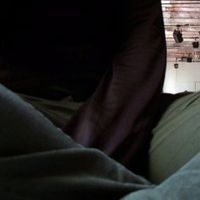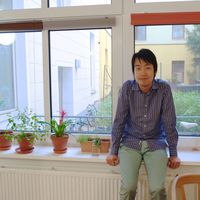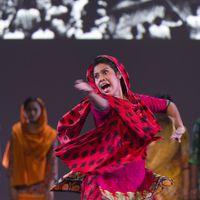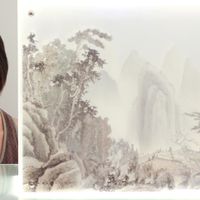The bridges to build in performing arts in Southeast Asia: utopia or reality? Part 2
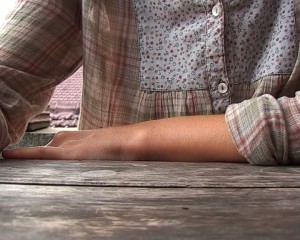
These interviews intend to classify working methodologies and define common grounds for programmers and artists. It’s part of a larger research, which will lead to a database of information about artists and programmers. The final aim of this research is to propose systems of dialogue between these two communities of professionals, in order to enable the arts market to escape from the neo-liberal rhythm of any other market, valorising the real essence and the meaning of art, without forgetting the importance of reaching an audience.
The countries that I visited in Southeast Asia (Singapore, Indonesia, Malaysia and Thailand) have different situations. My purpose was to interview artists and programmers who are connected internationally beyond their countries. I looked for people with a critical view of society but being new to the region, I did not know how the arts market worked. Since I did not have so much time, I interviewed people working in contemporary performing arts, instead of focusing only in the most experimental languages of art making. My purpose was to understand how these professionals work in order to understand how bridges can be built between programmers and creators
The artists’ way
When artists communicate with the audience, they are worried about translating a specific idea into a comprehensive discourse. Politics and social issues are the most important concerns when creating a piece. The most important thing for artists, when creating an art piece, is to understand why they do it, why is it important to say something through the art. To create awareness and to relate to an audience is the most common reason for artists to engage in the arts. Art is seen as a reflection of society and as a way to criticise it. For some artists, it is also a way of questioning themselves.
Most artists consider themselves to be more systematic than intuitive. They prefer to know exactly where they are going, and some even confess that they can only relax when they know that the process is controlled. Time, they explain, is something that they are very aware of, which needs to be under control and is the main reason for being so systematic. This is a consequence of the arts sector dynamics. Most artists do not work only in arts creation; they have other jobs, so they have to make plans in advance according to the collaborator’s availability.
Collaboration is a very common tool in creation processes. The more established generation of artists prefer to propose their specific ideas and directions in a collaborative creation process; the younger generation assume that creation can be done as a collective and they are very open to collaborative practices. In both cases, listening to what their interpreters and other collaborators have to say – whether they are professionals or not – is a very important part of the creation process. Opening the process is also very normal. While some artists tend to leave their rehearsals always open, where people can come and assist, others prefer to define the right time to show the process. However, the process is only opened to a specific audience from whom they want feedback. The public is invited only to the première.
Where are the programmers?
The figure of the programmer is one of the biggest differences between these countries. Singapore is a much westernised country. The biggest theatres and festivals of the region are here. Programming strategies were imported according to different western models, from the more commercial to the most alternative. This country has a well-established support for the arts, which is however, not perfect due to political restrictions. Singapore wants to be recognised as the centre of arts in Southeast Asia. On the opposite side, In Jogjakarta, Indonesia, there are only two venues with a regular programme: one of them is the French Cultural Centre, whose main focus is to promote the French language; and the other is PSBK, which presents one piece a month.
Most of the theatres and festivals within the region do not have a defined aesthetic line. Their concern is reaching a vast audience. Their content is based on different programmes with different artistic approaches. Even in big cities like Bangkok, I could not find a theatre with a well-defined aesthetic line. The audience seems to relate well to this strategy. Exceptions are Theatreworks and The Substation in Singapore, which have their own very clear programming strategy.
This situation led me to meet some freelance curators. As it is so difficult to define an aesthetic line in a venue, freelance curators are invited to develop different programmes within events or venues. These professionals have their own coherent line of work, which is adapted to the context and organisation in which they work.
Most artists I interviewed have a difficulty finding programmers, they almost don’t exist. The interesting thing is that even the few programmers I interviewed confirmed this situation. Singapore is the only exception where I could find more programmers and curators than creators. This situation makes artists assume the role of programmers. This happens in two ways: either renting places to present their pieces or setting up festivals that can contextualise the work that they do better.
Power issues between programmers and artists
As a result, the existing programmers have a lot of power. They have almost no competition so they can define their own rules and the conditions in which artists present their works. Most programmers or curators impose their conditions, either based on their own personal artistic views or in order to build audiences and contextualise the artistic work.
Many of the programmers who assume this professional role are also artists or have an artistic background. So there is a lot of ‘promiscuity’ between these two roles. However, since many artists don’t have many expectations with programmers, this dependency is easily overcome. This is an interesting paradox. The most well established artists do not expect much from programmers because they are not used to their existence. They know in advance that they have to produce their own work and prefer to programme themselves, close to their colleagues. The exception, I must say, is Singapore.
Conclusion
The profession of programmer is not very developed in the region. Many of the existing venues do not have a programmer; they are directed by someone who manages the rental. The exceptions are mostly in Singapore. This situation transforms artists into programmers and producers while they are also creators. Maybe this is one of the reasons for their systematic way of working. These are two professions that require a lot of investment.
Many of the existing venues with more regular programmes try to reach very different audiences and tend to have a very eclectic content. It is hard to programme with regularity and with a defined identity mainly for two reasons: there is not a lot of local production, consequence of the lack of support for artists; there are few places that can host international pieces, which can be very expensive, also due to the lack of support to venues.
Catarina Saraiva is a producer and programmer.
After 10 years at the direction of alkantara in Lisbon, in 2009 she moves to Madrid where she takes a master degree in “Performing Studies Practices and Visual Culture” at the University of Alcalá de Henares. In the frame of this master she initiates the laboratory and research project “Linha de Fuga”, a project which questions the relation between programmer and creator. This project ends with an artistic programme hosted in October by La Casa Encendida, in Madrid. Since September 2010 she’s part of the think tank and development group of El Ranchito, a research project promoted by Matadero Madrid. She collaborated as a dramaturgist in the piece “The Diary of Alice” by Joavien Ng and Paloma Calle. At the present moment she’s also developing a research project on the working methodologies of contemporary performing arts programmers and creators.


